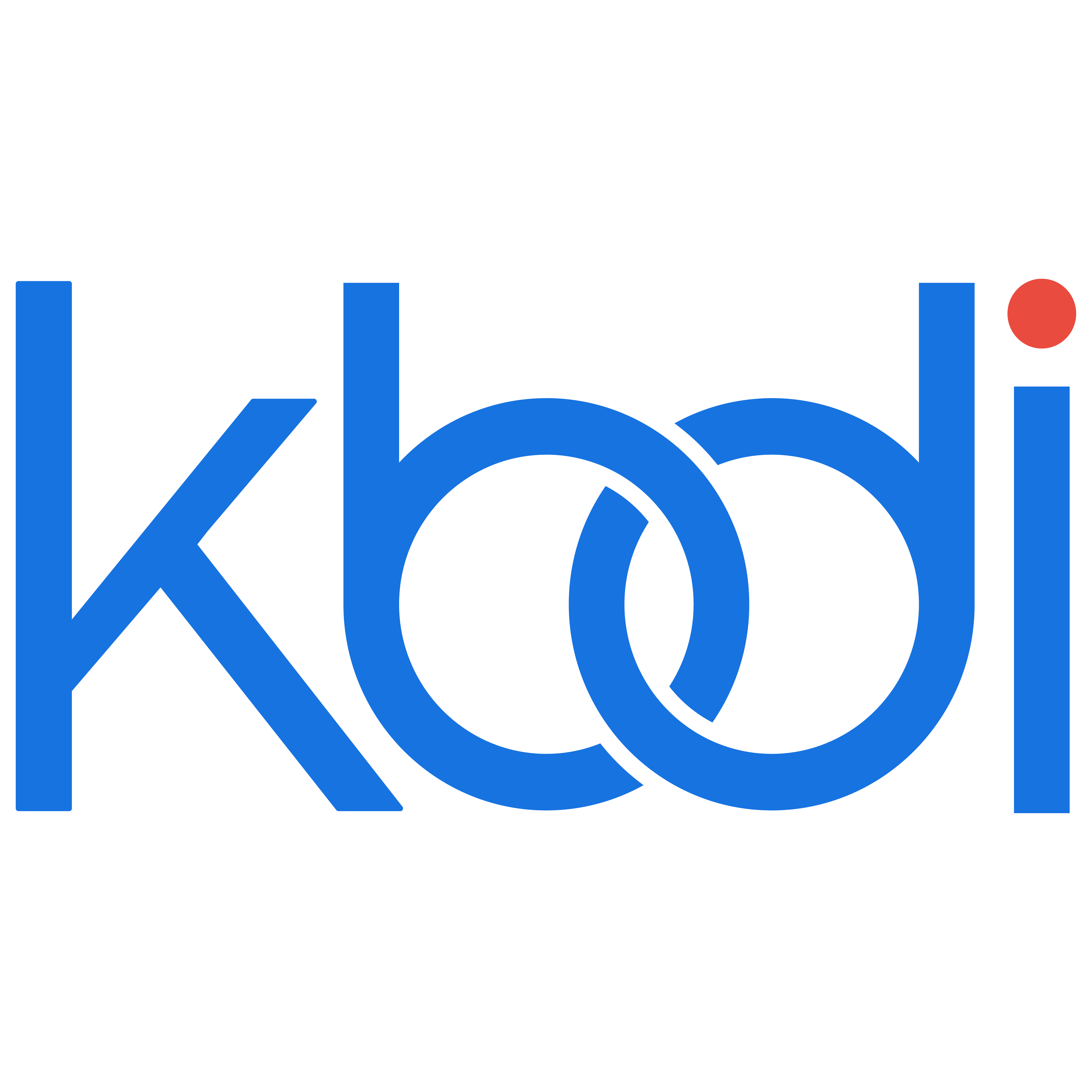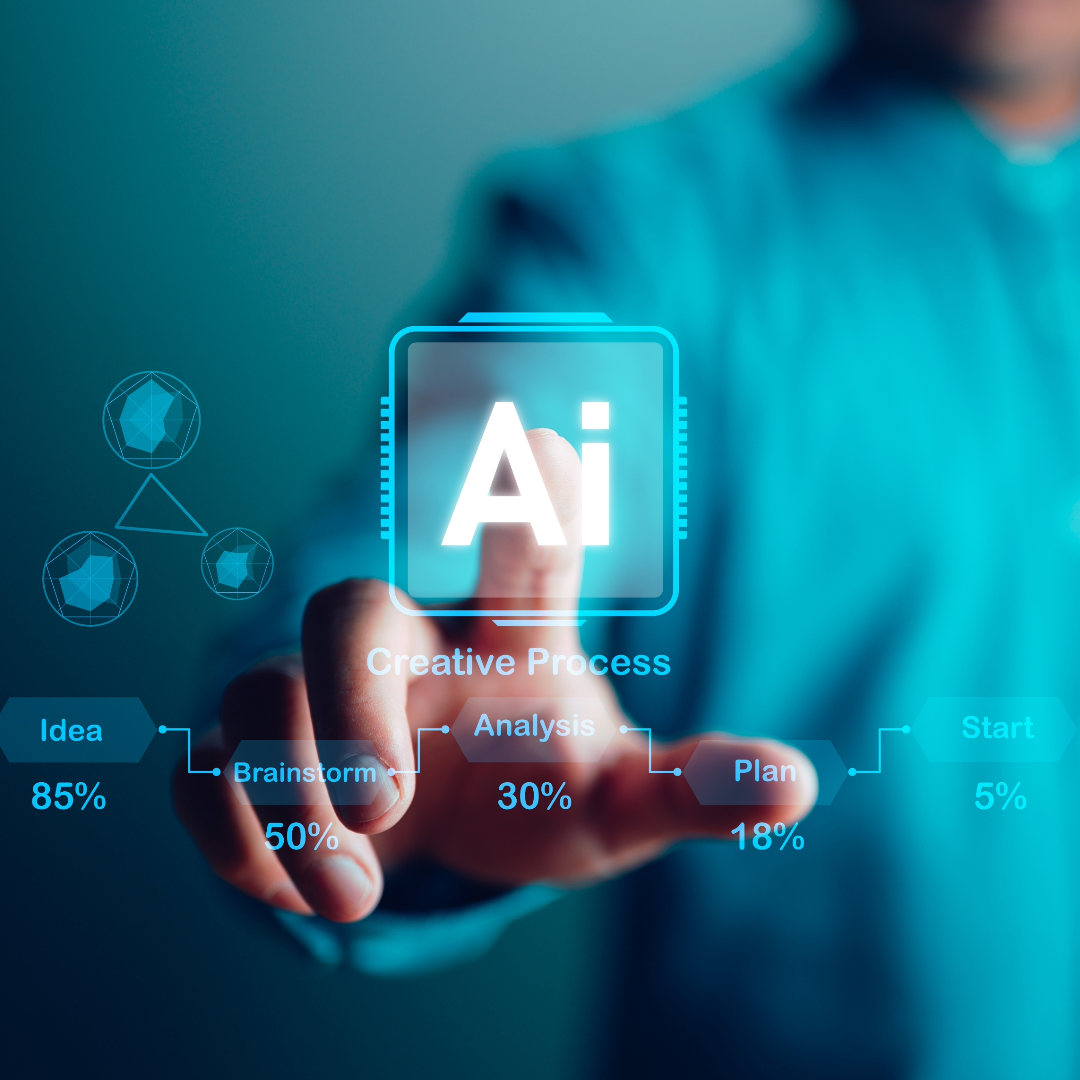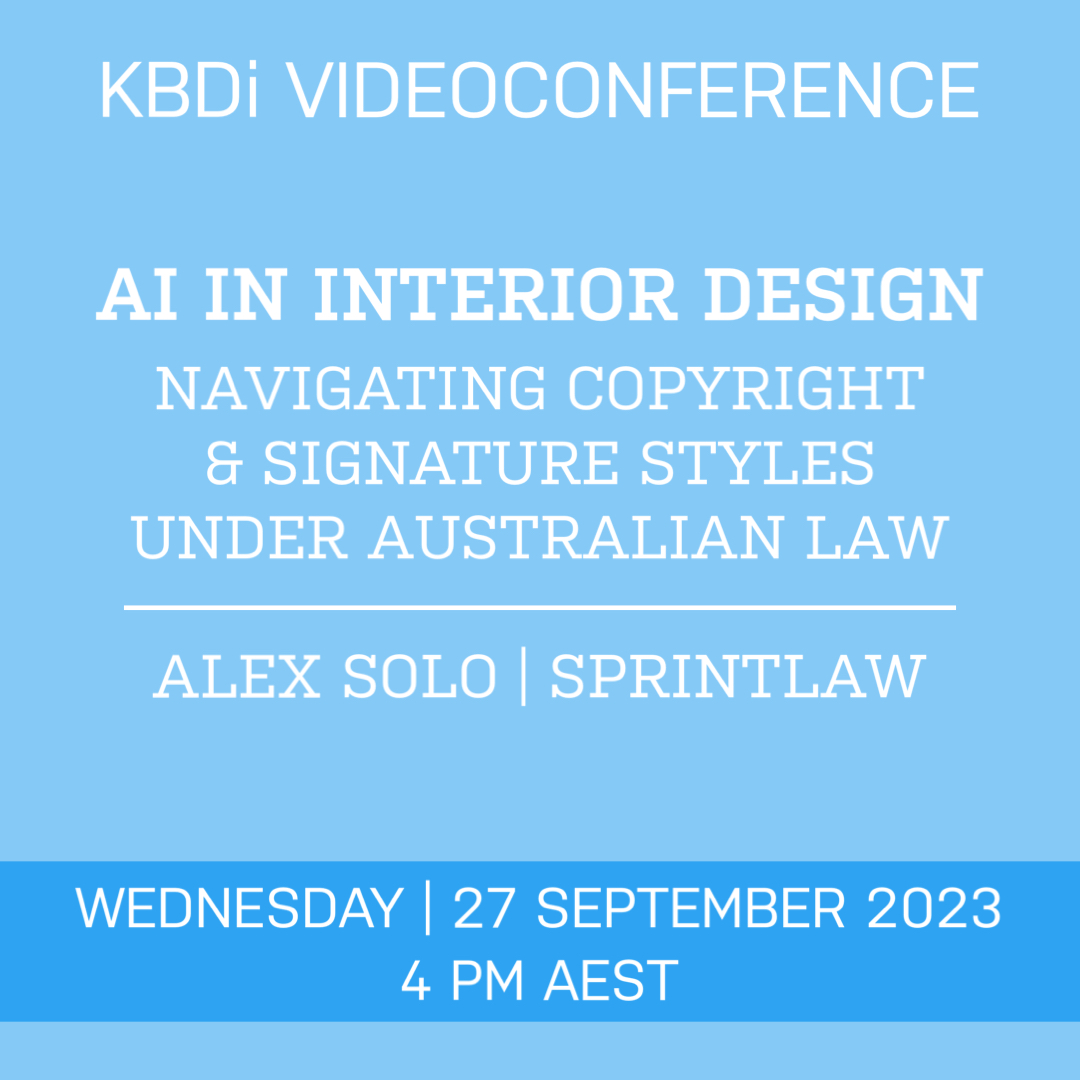A message from KBDi Legal Partners, Sprintlaw.
Artificial Intelligence (AI) has driven transformation across virtually every sector. Industries across the board are grappling with the effects and usefulness of AI. It’s no surprise the design industry is questioning how generative AI will interact with design, creativity and copyright.
AI has opened doors for increased creativity and innovation. At the same time, there are a lot of legal questions that remain unanswered. As AI’s presence grows and usage increases across the design industry, it’s important for designers to think about what this might mean for their unique style of design and how copyright may affect their use of this technology.
Let’s take a closer look at these legal challenges AI might bring to the design industry and the best way to be prepared for them.
AI and Copyright: A Complex Relationship
Historically, designs have originated from inspiration and individual creativity. A designer may glean ideas from their surroundings and then, through a process of ideation, produce something unique. With the emergence of generative AI, this process can be achieved quite differently – a designer can now simply specify elements they want to see in a search bar, and then allow AI to generate a design based on those specifications.
But with this ease comes risks. AI, in its design process, relies on vast databases of pre-existing human-created designs. This means that any output it provides is ultimately a melange of previously created designs. This new dynamic muddies the waters of what we traditionally understood as ‘originality’, creating complexity when applying established copyright norms.
What Is A Copyright Protected Work?
Let’s take a look at the basics first. Copyright is a type of intellectual property that protects the rights of the owner of a work to exclusively utilise their work in the way they want to. This means, only the person who holds the right to copyright can do things like distribute IP Licencesfor it, create a Trade Mark or engage in Commercial Contracts regarding their work.
So, what qualifies something to be worthy of copyright?
The concept of copyright is legally protected in the Copyright Act 1968. In Australia, you do not need to apply for copyright, as it is applied automatically. This means that when you create an original piece of work, the copyright becomes yours instantly at the moment of creation.
However, in order for a work to be considered appropriate to be copyrighted, it must be an original piece of work. By most legal definitions, original work is something that has been created out of an individual’s own skill and labour.
This is where it starts to become a little complex. Our current definitions of copyright and originality don’t take AI into consideration. Therefore, it can create challenges when trying to establish copyright in work AI has had a hand in creating.
Who Owns The Copyright?
Currently, there is no clear legal answer as to who might own the copyright to something generated by AI. Is it the individual using the AI? The owners of the AI? Or the AI itself? How do the terms and conditions of the AI’s creator fit into this story?
So far, the Australian copyright system hasn’t caught up to factor in AI, and there are very few regulations or court cases dealing with these questions. But given the attention and hype AI is receiving, it’s likely more regulation in this area will emerge.
It’s important to keep this in mind when using AI for your work, as when this happens, it may impact your work or relationship with AI.
Can I Copyright Something I Generated With AI?
| Based on a reasonable interpretation of current copyright laws, there’s a good chance you cannot copyright something that has been completely created by AI. However, you may still be able to claim copyright on your work if it has elements of AI, as long as there’s been enough human intellectual effort contributed to it. |
What Steps Can I Take To Protect My Copyright?
Even though there’s a bit of uncertainty when it comes to copyright and AI, this shouldn’t completely prevent you from using the technology to further your creativity and designs. Rather, it’s important to be careful, understand the legal landscape and plan out the steps you can take to best protect your work when using AI. We’ve listed a couple of things you can do to protect copyright in your designs in the current legal landscape:
Establish Originality: It’s important to be transparent about the portion of your work that AI contributed to.
Show Human Effort: It’s also equally important to demonstrate which parts of your work were your own skills and labour.
Check Terms and Conditions: Check the terms and conditions of the AI software you are using to see if they have any clauses relating to copyright and ownership of work generated with the software.
Seek Legal Protection: Finally, it’s important to get the right legal advice and, if possible, legal protection for your work.
Depending on the nature of your work and the purpose for protecting it, there’s a range of legal options available. We’ve summarised some of these options below, but it’s always best to talk to a legal expert to understand these better. Sprintlaw offers a Copyright Consult service with one of our experienced copyright lawyers, which may be a good place to start.
What Legal Documents Can I Get To Protect My Copyright Material?
As mentioned above, copyright isn’t something you can submit an application for and get it approved. Even though having copyright applied automatically has a lot of advantages, one of its disadvantages is that it doesn’t come with a lot of legal protection. If you want to protect your designs, whether they were created with the help of AI or not, then it’s important to get the right legal documents sorted so you can have enforceable rights over your work.
A few legal documents and processes you might want to look into getting done include:
- Copyright Disclaimer
- Copyright Licence
- IP Assignment Deed
- IP Licence
- IP Health Check
- Trade Mark Registration
- Registered Design Application
Your exact needs will depend on your unique circumstances, so it’s important to talk to a legal professional to decide what the best options for you are. Perhaps, you need a copyright disclaimer on your work, or you simply want a general check-up to see how your business’s IP protection is holding up.
What Challenges Might I Face?
There’s no certainty when it comes to your outcomes, as these are still relatively new and untested waters. Some of the documents we mentioned above can give you a better chance at securing your copyright. However, there’s still a lot left to be explored and answered when it comes to copyright and AI.
Technology and laws can change quickly or take some time- whether this is on a global scale or nationally. It’s important to keep a close watch on these things and stay as informed as possible, so you can navigate through it effectively.
I Have A Signature Style – What Could AI Mean For Me?
As a designer, you may have a ‘signature style’ – your distinct creative expression that sets you apart from other designers. Not all designers have a signature style however, those who do might be wondering how to safeguard and preserve their signature style. The last thing you want as a designer is one of your styles popping up in someone else’s AI-generated image.
How Should I Protect My Signature Style?
Unfortunately, signature style isn’t an explicit category of work that is protected by copyright. However, if you can show that a work copies a “substantial part” of one or more designs you’ve created, or uses a registered design or trade mark of yours, you may be able to make a claim for IP infringement.
Practically, here are a few steps you can take to protect your signature style:
Keep an eye out: Scan the market for potential replicas of your work.
Know your rights: If you do run into something that looks too familiar, it’s important to know what you can do about it or whether there is enough substance to even take legal action. Getting informed about your options is your next step.
Get the right legal protection: You will be in a better position to protect your signature style if you have taken proactive steps to legally protect your work. Having the right legal agreements in place or going through the correct legal processes to protect your designs can play a large role in helping protect your signature style.
|
Example A certain shade of purple is synonymous with Sonia’s interior design label. Sonia wanted to make sure no other designers would be able to use the same shade to market their brand, as this could risk her brand’s identity and signature being confused with theirs. So, Sonia decided to register that particular colour as a Trade Mark. In doing so, Sonia was able to secure legal protection for something that is closely related to her brand’s identity, safeguarding her signature style along the way. |
A Delicate Balance
In the age of AI, protecting your signature style and your individual designs requires you to be well-informed and legally protected. Even though there are still some questions regarding copyright and a lack of direct protection for signature styles, it’s important that designers use legal avenues to protect their work.
Utilising new technologies to create better innovations and ensuring your work is able to maintain a sense of individuality requires a delicate balance. As technology continues to grow, a designer’s success might just lie in their ability to achieve this balance.
Next Steps
Protecting your designs is crucial, particularly as AI begins to play an increasingly prominent role in the design sector. Talking to a legal expert can help you get everything sorted – that way, you can harness your creativity without worrying about the other stuff. To summarise what we’ve discussed:
- AI has significantly impacted various industries, including the design industry, raising questions about its interaction with creativity and copyright
- Generative AI has brought both opportunities and legal challenges, as it blurs the line between originality and copyright protection
- Copyright protection in Australia applies automatically to original works created with individual skill and labour, but AI’s involvement complicates the definition of originality
- The ownership of copyright for AI-generated works remains uncertain, and the legal system has yet to fully address this issue
- Although it might be challenging to copyright something completely generated by AI, works with significant human intellectual effort may still be eligible for copyright protection
- Various legal documents and processes, such as copyright disclaimers, licences, and trademark registrations, can help safeguard designs
- Designers with signature styles face unique challenges, as signature styles are not directly protected by copyright
- To protect their signature styles, designers can monitor the market for replicas, know their legal rights, and seek appropriate legal protection through trademarks or other legal agreements
- Achieving a delicate balance between embracing AI technology and preserving individuality is crucial for designers in the AI era
- Consulting with legal experts can help designers navigate copyright issues and safeguard their creative work effectively in the face of AI’s increasing presence in the design sector
If you would like a consultation on your options regarding AI and interior design, you can reach out to Sprintlaw at 1800 730 617 or team@sprintlaw.com.au for a free, no-obligation chat.
Want to learn more?
Join us for a live discussion about all things AI with Sprintlaw Co-Founder Alex Solo.
Register today to secure your spot.








A well thought out and considered article on AI, Copyright, and the impacts on design professionals. Thanks for sharing.